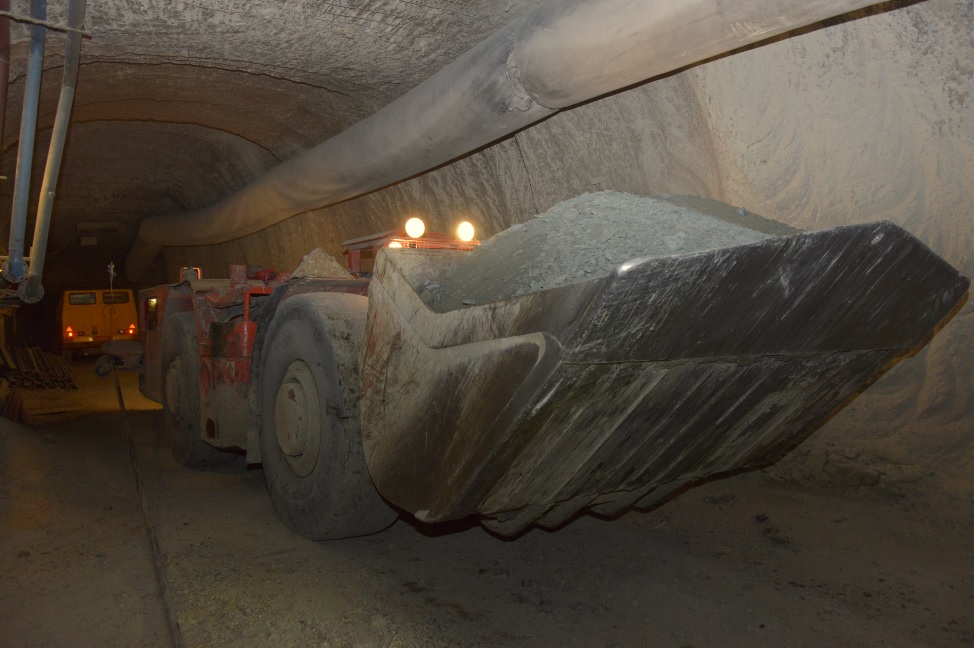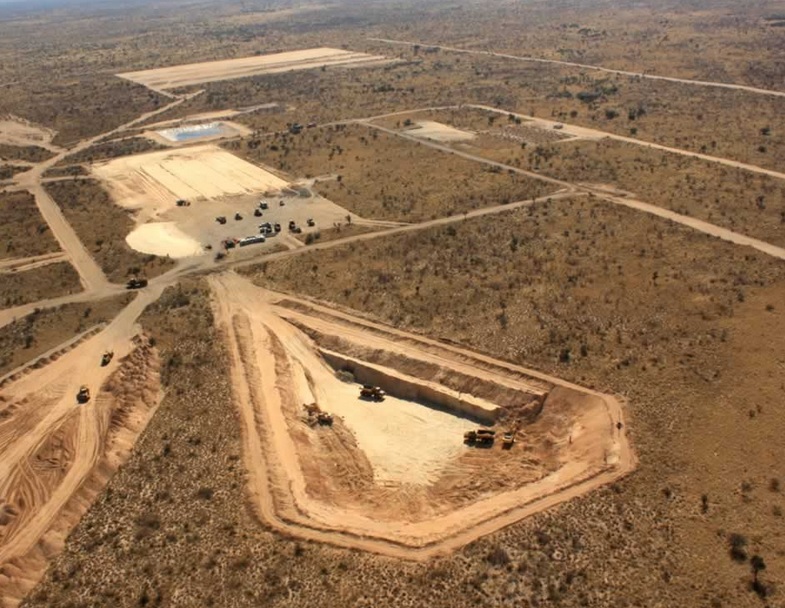|
|
Rough Diamond Over-Supply
Mining Prospects in 2014
Jan 17, 2014 5:00 AM
By Avi Krawitz
|
|
|
RAPAPORT... Editorial: Diamond miners are treading a fine line these days, careful to keep short-term production levels in line with demand. Planning their production for 2014 may therefore be tougher than usual given current rough market conditions.
Their customers, the dealers and manufacturers who buy rough diamonds, are frustrated by the low profit margins they’ve been able to garner in the past few years. Restrained by tighter bank credit, rough buyers are determined to ensure that margins improve in 2014 and they appear willing to reject non-profitable rough when necessary – even if demand is strong ahead of next week’s De Beers sight.
However, overall rough demand is likely to be flat in 2014, as it was in 2013, and average prices are expected to soften while manufacturing levels remain well below capacity.
Yet, production increased last year and mining companies were thought to be holding relatively large inventories at the start of 2014. One wonders who is holding goods in the ground and who is holding in their safes.
Regardless, the major mining companies – De Beers and ALROSA – are planning production at similar levels to last year, while the mid-tier and smaller producers are increasing their output as development projects come to fruition.
In fact, there is a fair amount being invested in diamond mining as companies seek to boost production beyond 2014. For them, longevity is the key as they foresee long-term diamond supply falling short of demand due to expected consumer growth in China and India. As a result, there are a number of projects that will gain momentum in 2014, including expansion of existing mines and programs to develop new ones, which will ensure sufficient supply to the market in the coming decade or two.
While De Beers has limited its spending on new mine development, it is concentrating on prolonging production at its flagship Jwaneng mine in Botswana and the Venetia mine in South Africa. At Jwaneng, said to be the richest diamond mine in the world by value, De Beers is working on the cut-8 extension that will extend the life of the mine to 2025. The company is expected to make a decision this year regarding cut-9, which will further stretch Jwaneng’s life. At Venetia, De Beers launched a $2 billion project in October to build an underground mine that will extend operations beyond 2040.

ALROSA has plans to raise its group annual production from around 35 million carats in 2013 to 40 million carats in 2020 before settling back to 34 million carats in the longer term. The company is going deeper to tap its estimated total resource of 1.154 billion carats. Of its 10 operating mines, the Mir, International and Aikhal mines are already underground, while the Udachny underground mine (pictured) is scheduled to fully transition by 2015. At the same time, ALROSA’s Severalmaz operation is forecast to ramp up production from 559,000 carats in 2012 to 10 million carats annually over the next 20 years.
Similarly, Rio Tinto last year launched underground operations at the Argyle mine in Australia and is expected to recover around 20 million carats a year beyond 2020. The company is also hoping to launch production at the Bunder mine in India by 2019, where it is reportedly expecting annual production of 3 million carats over 25 years.
The mid-tier diamond mining companies had an important year in 2013. Dominion Diamond Corporation, formerly known as Harry Winston, bought the Ekati mine from BHP Billiton to emerge as Canada’s largest diamond miner. Dominion also owns a 40 percent share of the Diavik mine, which is operated by its 60 percent owner Rio Tinto. While current mining at Ekati is expected to end in 2019, Dominion believes it can extend production by developing the Jay and Cardinal kimberlite pipes on the property, adding 10 to 20 years to the asset. Petra Diamonds, meanwhile, is steadily ramping up production to achieve its goal of 5 million carats a year, from its current level of 3 million carats. Petra is focused on major expansion programs at its Finsch, Cullinan and Koffiefontein mines, which would add more than a decade of life to each.
The new kid on the block, Lucara Diamond Corp., is expecting a break-out year in 2014. Having launched production at its Karowe mine in Botswana, the company expects to sell more than 400,000 carats of diamonds from the mine in the coming year, generating over $150 million of revenue in the process. Lucara is also considering its options for its other asset, the Mothae mine in Lesotho, which remains mothballed on care and maintenance.
Similarly, Gem Diamonds currently has production from one operation, its high value Letšeng mine in Lesotho, but is developing the Ghaghoo mine in Botswana (pictured, courtesy www.gemdiamonds.com). Gem Diamonds is expecting to launch production at Ghaghoo in the second half of 2014, tapping its estimated total resource of 20 million carats.

Also operating in Botswana and Lesotho, Firestone Diamonds received a boost this week by securing the required $140 million to construct the main treatment plant at the Liqhobong mine. The company is aiming to raise production at the Lesotho-located project from just over 150,000 carats in fiscal year 2013 to 1 million carats in 2016. Firestone’s BK11 mine in Botswana is currently on care and maintenance as the company reviews its options for the mine.
The Zimbabwe Marange mines are starting to think long term as the current concessions are depleting their surface mining, with some companies prepared to invest to go underground, and others less willing to spend the money necessary to do so.
However, perhaps the most prospective of new mines coming on stream is the Gahcho Kué mine in Canada, which is a joint venture between De Beers and Mountain Province. The mine is expected to launch production in the fourth quarter of 2015 and is forecast to produce an average of 4.5 million carats annually over a relatively short 11-year mine life.
Of a similar scale, construction of the processing plant at the Grib mine in Russia reportedly started in 2013. The mine, which is owned by Lukoil, is projected to produce 4 million carats a year and reportedly has an open pit resource of around 57 million carats. Also under construction, production at the Renard mine in Canada, owned by Stornoway Diamonds, is expected to launch toward the end of 2015 and is projected to recover 1.6 million carats a year over 11 years. Shore Gold’s Star–Orion South Diamond Project is in an advanced stage of development and has an estimated 34 million carat resource and a 20-year mine life.
There are a number of other smaller projects in the works. The Namakwa Diamonds’ Kao mine in Lesotho is under construction and has an indicated resource of 3.1 million carats, while DiamondCorp is expected to launch kimberlite mining at South Africa’s Lace mine in the third quarter of this year and ramp up to annual production of 300,000 carats over a 10-year period.
The list, which may be incomplete, suggests that the next few years will be relatively eventful for the diamond mining sector. Diamond mines are rare and take a long time to develop, making these projects all the more exciting. However, these are not super mines of the same ilk as Jwaneng, Argyle or Mir that can carry annual production of 10 million carats for 40-plus years and are unlikely to change the overall supply-demand dynamic.
Rather, the mines coming on stream are moderately small and the expansion projects designed to maintain the respective company’s positions in the market. Therefore, the supply forecasts for the next 20 to 30 years are relatively stable. That may suit the mining companies’ investment proposals as shareholders are excited by the prospect that diamond supply should fall short of demand in the long term.
But, it does not boost their prospects for 2014 and the majors are understandably modest about their production plans for the year. However, given the programs in place to raise long-term output, overall global production is expected to rise slightly in 2014. Whether the market warrants more goods at this stage remains to be seen. Add to that the conservative attitude among manufacturers toward the rough market, all factors point to an oversupply of rough in 2014. Miners may be left with a choice to hold back goods in the ground or in their safes. Unless, that is, they’re willing to sell more goods at lower prices.
The writer can be contacted at avi@diamonds.net.
Follow Avi on Twitter: @AviKrawitz and on LinkedIn.
This article is an excerpt from a market report that is sent to Rapaport members on a weekly basis. To subscribe, go to www.diamonds.net/weeklyreport/ or contact your local Rapaport office.
Copyright © 2014 by Martin Rapaport. All rights reserved. Rapaport USA Inc., Suite 100 133 E. Warm Springs Rd., Las Vegas, Nevada, USA. +1.702.893.9400.
Disclaimer: This Editorial is provided solely for your personal reading pleasure. Nothing published by The Rapaport Group of Companies and contained in this report should be deemed to be considered personalized industry or market advice. Any investment or purchase decisions should only be made after obtaining expert advice. All opinions and estimates contained in this report constitute Rapaport`s considered judgment as of the date of this report, are subject to change without notice and are provided in good faith but without legal responsibility. Thank you for respecting our intellectual property rights.
|
|
|
|
|
|
|
|
|
|
Tags:
Alrosa, Avi Krawitz, De Beers, diamonds, Rapapport, Rio Tinto
|
|
|
|
|
|
|
|
|
|
|

|
|